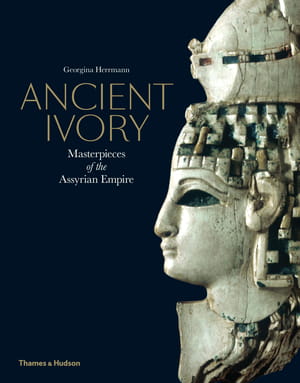
Ancient Ivory: Masterpieces of the Assyrian Empire
Graham Chandler
Georgina Herrmann
2017, Thames & Hudson, 978-0-50005-191-7, $60 hb.
British archeologist Austen Henry Layard discovered the first pieces of carved ivory at Nimrud in 1845, but it wasn’t until a century later that his countryman Max Mallowan revealed the astonishing number of ivory masterpieces at the first-millennium-BCE Assyrian capital in northern Iraq. Mallowan’s team unearthed thousands of ivories, probably made from the horn of the African elephant, in the most unlikely places: well bottoms, palace storerooms or just strewn about. This may attest to the low value the Assyrians placed on the artworks, writes Herrmann, a specialist in Nimrud ivories at University College London, who says the majority were not made at Nimrud but acquired as gifts or tribute, or booty from enemy states. Hundreds of the finds, which illuminate Middle Eastern art and culture more than 2,500 years ago, are superbly photographed and meticulously described, including their provenance at Nimrud and last-known location. The value of this volume to academics and interested amateurs is immense, as many of the pieces shown no longer exist or have been lost to looters during recent conflicts.
You may also be interested in...

The Ebb and Flow of History on the Zambezi River
In tracing the past six centuries of history, historian Malyn Hewitt captures the cyclical rise and fall of the river and its people.
Dissolved Monopoly’s Legacy Hinges on How India Honors Its Political Architecture
From the first fortified trading post in northeastern India, historian Rosie Llewellyn-Jones tracks the physical changes wrought by the English East India Company.
Omani Author Zahran Alqasmi's Story About Life, Land and Honey
In his third novel, about a beekeeper living in Oman’s mountainous interior, local author Zahran Alqasmi grapples with a changing landscape around him.